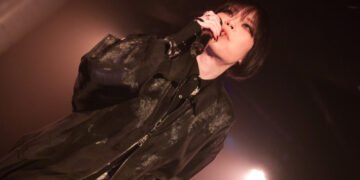My passion for Japan was initially focused on music, travel and history. In recent years I have also been interested in art, architecture and culture. As a result, I come to places and cities where I would not otherwise come so quickly. For the Japan Day, I especially travelled to Düsseldorf, for fabulous Japanese prints to the Amsterdam private museum Nihon no hanga and I travelled especially to Dordrecht for an exhibition about the first Japanese warship: the Kaiyo Maru. I recently visited the cosy Louis Couperus museum in The Hague. “Oh yeah”, I thought, when I saw a list of his novels there: Psyché, Fidessa, Eline Vere, etc. Literature that was once on my compulsory high school reading list and whose content I reluctantly quickly mastered through an excerpt book. And what it is about, I have long forgotten.
At the entrance, I was welcomed enthusiastically by a charming volunteer who briefly told me about the museum and its origin. With a brief hand out, I observed all the objects. I once started on his book Nippon (travel stories) but never was able to read it completely. And Dutch literature about Japan has never fascinated me because Japanese people are usually described in stereotypes. But that is the beauty of this exhibition: a connection is made between the texts of Couperus and his sources of inspiration and information. For many prints and other objects, the relevant passage from the book The Cord of Redemption is mentioned. The prints are really beautiful and varied in the subject matter. From the most beautiful woman in Japan (Komachi) to rainstorms beautifully depicted by Hiroshige. And from prints about hell and demons to Kachō-ga (the poetry of Japanese nature). It is a pity that many facsimile copies have been used, but because of the vulnerable originals, it is very understandable. In addition to the beautiful prints, I found the kimono very beautiful. And there are interesting Japanese memorabilia. A business card from the guide of the Couperus couple, a promotional brochure for the hotel in which they were staying, photos, etc. The exhibited pieces bring his literature to life.
And very surprising, especially before that area, was the fact that Louis Couperus was concerned about the fate of prostitutes. He strongly criticized Kitagawa Utamaro, who through his prints romanticized the life of courtesans while in reality, they had to lead a very miserable life. Also, Tokugawa Ieyasu, the first shogun, was criticized because he actually encouraged women and children of barely 14 years to sell themselves as utensils. All this to prevent Japanese men from becoming frayed wires.
The exhibition lasts until 14 May. In 2018 a revised edition of Het snoer der ontferming (The Cord of Redemption) was published: the texts of Couperus together with the sources he used.





















